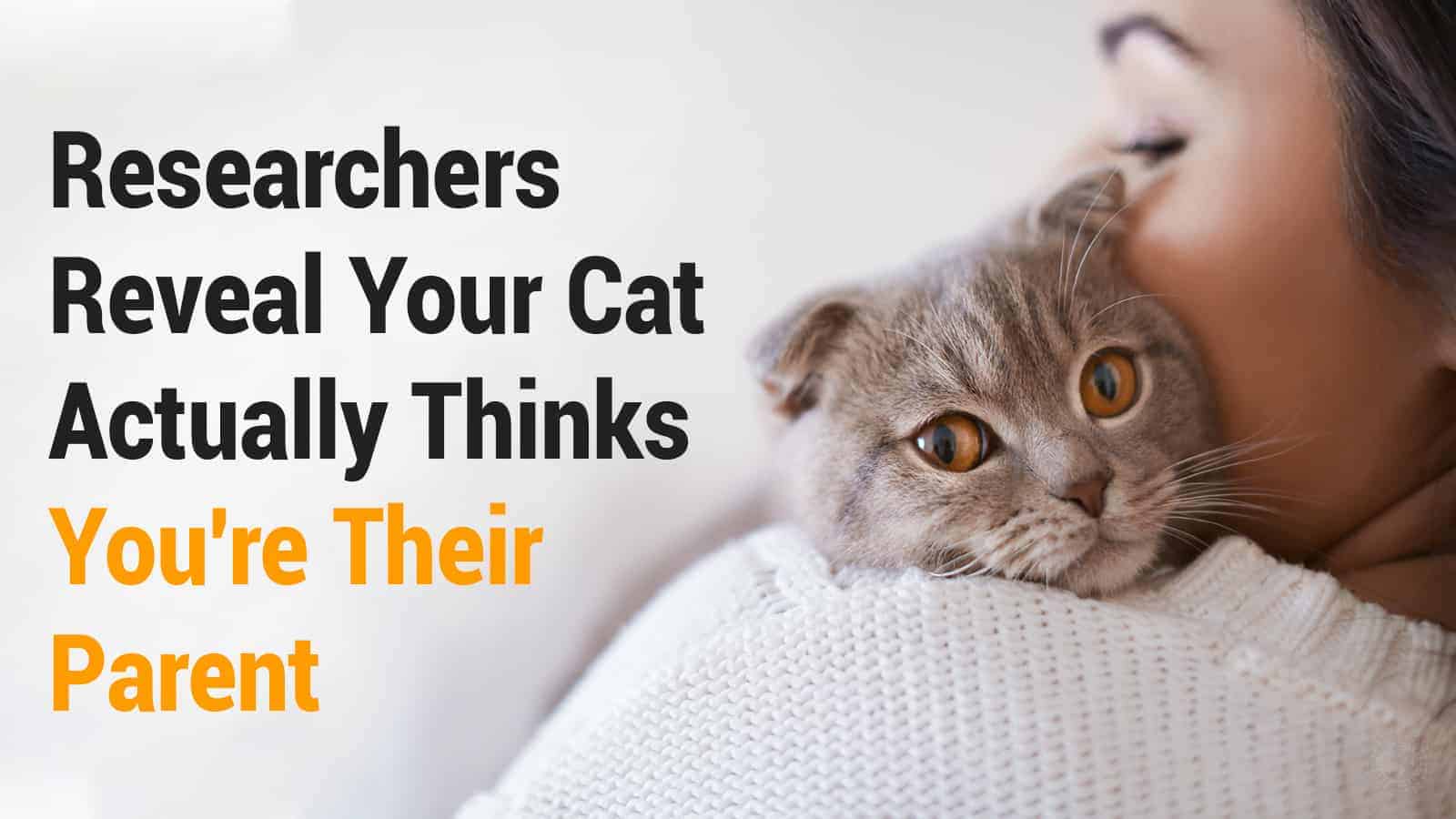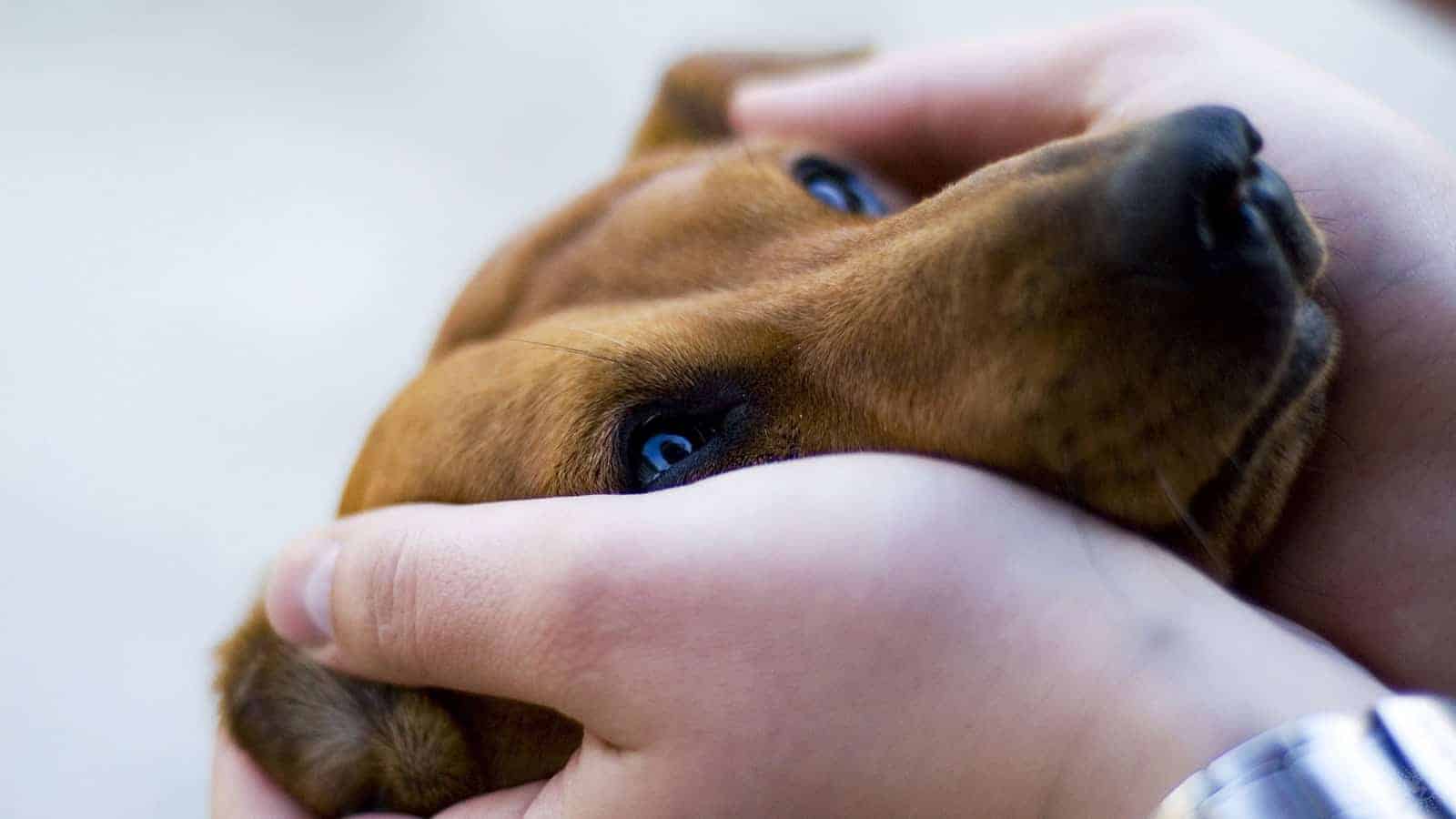Even though your cat may hide from you for days, sometimes, a study reveals it actually thinks of you as its parent. While cats form close bonds with their caregivers, they usually shy away from visitors and even other family members. Anyone who owns a cat can probably attest to this behavior but may have wondered why their pet seems to play favorites. Now, studies show why our feline friends act so attached to their owners.
Despite their sometimes aloof behavior, a study published in Current Biology found that felines actually form distinct attachment styles. Similar to babies and dogs, cats have socio-cognitive abilities that allow them to bond with their owners. The study found that cats can have either secure or insecure attachments with their parents, which have also been noted in humans. Researchers say that the findings suggest that the shared bonding styles across species show commonalities in behaviors.
Worldwide, domestic cats greatly outnumber domestic dogs. However, even though more people own cats, scientists have focused on dog behavior and social cognition. Their research found that dogs form attachment bonds with humans, which could help them succeed in human environments. Previously, researchers believed that this attachment behavior was unique to dogs.
New research emerges
 However, the groundbreaking study performed recently shows that we’ve been underestimating cats’ ability to bond with us. Like dogs, cats can live in social groups or by themselves depending on resources, human interaction, and early development. If felines grow up with humans, they will likely display the same attachment styles into adulthood. The evidence that cats share social traits with dogs and humans suggests that they have adapted to modern living arrangements.
However, the groundbreaking study performed recently shows that we’ve been underestimating cats’ ability to bond with us. Like dogs, cats can live in social groups or by themselves depending on resources, human interaction, and early development. If felines grow up with humans, they will likely display the same attachment styles into adulthood. The evidence that cats share social traits with dogs and humans suggests that they have adapted to modern living arrangements.
“Like dogs, cats display social flexibility in regard to their attachments with humans,” said study author Kristyn Vitale of Oregon State University. “The majority of cats are securely attached to their owner and use them as a source of security in a novel environment.”
Attachment behavior studies previously performed on humans involved observing kids’ responses to their parents after a brief period of absence. When they reunited with caregivers, researchers noted two attachment styles – either insecure or secure. The insecurely attached kids would engage in excessive clinging or avoidance behavior, while the securely attached would appear more relaxed. Similar tests have been run on primates and dogs, so Vitale and her colleagues wanted to try it with cats.
The study
During the study, felines and their owners participated in a Secure Base Test (SBT), which is used to observe attachment styles in primates and dogs. In the test, the adult cats or kittens spent two minutes in a room with their owner, followed by two minutes alone. Then, the felines reunited with their owners, and researchers observed their behavior. Expert attachment coders classified the cats into attachment styles using the same criteria in human infant and dog literature.
In known studies using the SBT, individuals with secure attachment to their owners display a reduced stress response and relaxed exploration. However, in those with insecure attachment, their stress remains high upon the owner’s return. They will either display clingy behavior (ambivalent attachment), avoidance behavior (avoidance attachment), or a combination (disorganized attachment).
The Secure Base Test
The Secure Base Test involved kittens aged 3-8 months old. Researchers could classify 70 kittens into an attachment style, with only nine unable to be classified. Among the 70 classified kittens, almost 65% showed secure attachment behavior, and 35% had an insecure attachment. In the insecurely attached kittens, 84% had an ambivalent attachment, 12% avoidant, and 4% disorganized.
Interestingly, in human studies, around 65% of infants show secure attachment to their caregivers. This striking similarity in data across human and feline relationships with their humans display the adaptability of our feline friends. Researchers believe that the study shows how cats have successfully integrated into modern environments by forming bonds with their caretakers.
However, the scientists wanted to see if a 6-week training and socialization intervention could predict the kittens’ attachment style. When they compared these cats with the control group, they didn’t find any significant differences in attachment styles at the 2-month follow-up. This suggests that even though social reinforcement may help develop an attachment style, it will remain stable once established. In other words, if a feline shows insecure attachment, it will likely keep up that behavior into adulthood.
The researchers found the proportion of secure and insecure kittens at follow-up mirrored that of the control group. 68.6% of cats displayed secure attachment, while 31.4% showed insecure attachment. 81% of the cats had the same attachment style when retested. The researchers believe that inherited temperaments influence attachment style and may contribute to stability.
But why?
Cats, like other domesticated animals, depend on humans for care even in adulthood. The researchers predicted that the felines would show attachment behavior toward a caretaker as adults, so they decided to test this theory. They took 38 cats over one year of age to participate in the study. The cats had an attachment style distribution similar to the kittens: 65.8% secure and 34.2% insecure.
They wanted to rule out the possibility that various responses to stressful situations could explain the differences in attachment styles. So, they analyzed how often the cats meowed during their time alone to measure separation anxiety. The attachment theory says that both secure and insecure cats should show signs of distress, with little difference between the groups. However, insecure-avoidant and disorganized felines should show less distress.
As the researchers predicted, both insecure-ambivalent and secure felines showed equal distress levels during the alone phase. They had more signs of distress than the insecure-avoidant and disorganized cats, which the scientists also predicted. So, if your cat runs and hides when they see you or acts aloof, it probably is insecurely attached. If it rubs up on your leg and seems to enjoy being around you, it likely has a secure attachment.
The takeaway on the research
Researchers observed various attachment behaviors such as proximity seeking, separation anxiety, and reunion behavior between cats and humans. The differences in response remained consistent with the attachment style categorizations previously determined in studies.
Overall, cats show a similar capacity for forming insecure and secure attachments with caregivers previously shown in children and dogs. 65% of children show secure attachments, while 35% display insecure attachments. In dogs, the rates are 58% secure and 42% insecure. As we’ve stated above, cats and humans both have around 65% secure attachment to caregivers, showing similarities in their behaviors.
The researchers want to use this data to understand better how living in animal shelters may impact cat and kitten behavior. “We’re currently looking at several aspects of cat attachment behavior, including whether socialization and fostering opportunities impact attachment security in shelter cats,” Vitale said.
A Nestlé Purina sponsorship for studies in cat and dog emotional well-being and the National Science Foundation supported the study.
Other interesting facts about cats:
- Cats are the most popular domestic animal in the world. In fact, over 500 million of them live with humans.
- Felines and humans have been living together for around 10,000 years.
- Cats sleep a lot, around 13 to 14 hours a day. Because they’re carnivores, they need to conserve their energy.
- Cats have teeth designed to hunt and eat small animals such as mice.
- Domestic cats usually weigh anywhere from 8 to 11 pounds.
- The heaviest domestic cat on record is 46 lb 15.2 oz.
- Because cats in the wild hunt at night, they have powerful night vision allowing them to see at light levels six times lower than humans.
- When cats walk, their back paws step in almost the same place as their front paws did. This limits the tracks they leave behind and keeps noise down, helping them hunt more effectively.
- Felines live 12 to 15 years on average.
- Cats lick their coats as a way to clean themselves.
- House cats share 95.6% of their DNA with tigers.
 Final thoughts on the study that shows your cat thinks you’re their parent
Final thoughts on the study that shows your cat thinks you’re their parent
In a fascinating new study, scientists reveal that felines share similar attachment behaviors as dogs and humans. In fact, cats look at their owners as parents because they have essentially raised them. Domesticated animals such as dogs and cats display the same attachment styles as human infants due to their modern living arrangements. However, even in the wild, dogs and cats often live in packs and display similar behaviors.
Perhaps their attachment and ability to bond with humans make them such wonderful pets. Hopefully, your cat feels securely attached to you and doesn’t immediately run behind the couch when you get home. Although, don’t get offended if it does act this way; the studies about feline attachment styles have just begun. Researchers still can’t say with certainty what makes cats behave a certain way and how various lifestyle factors may come into play.
Either way, kitties and humans have a long history together, and it’s clear that we make a pretty good team.


















